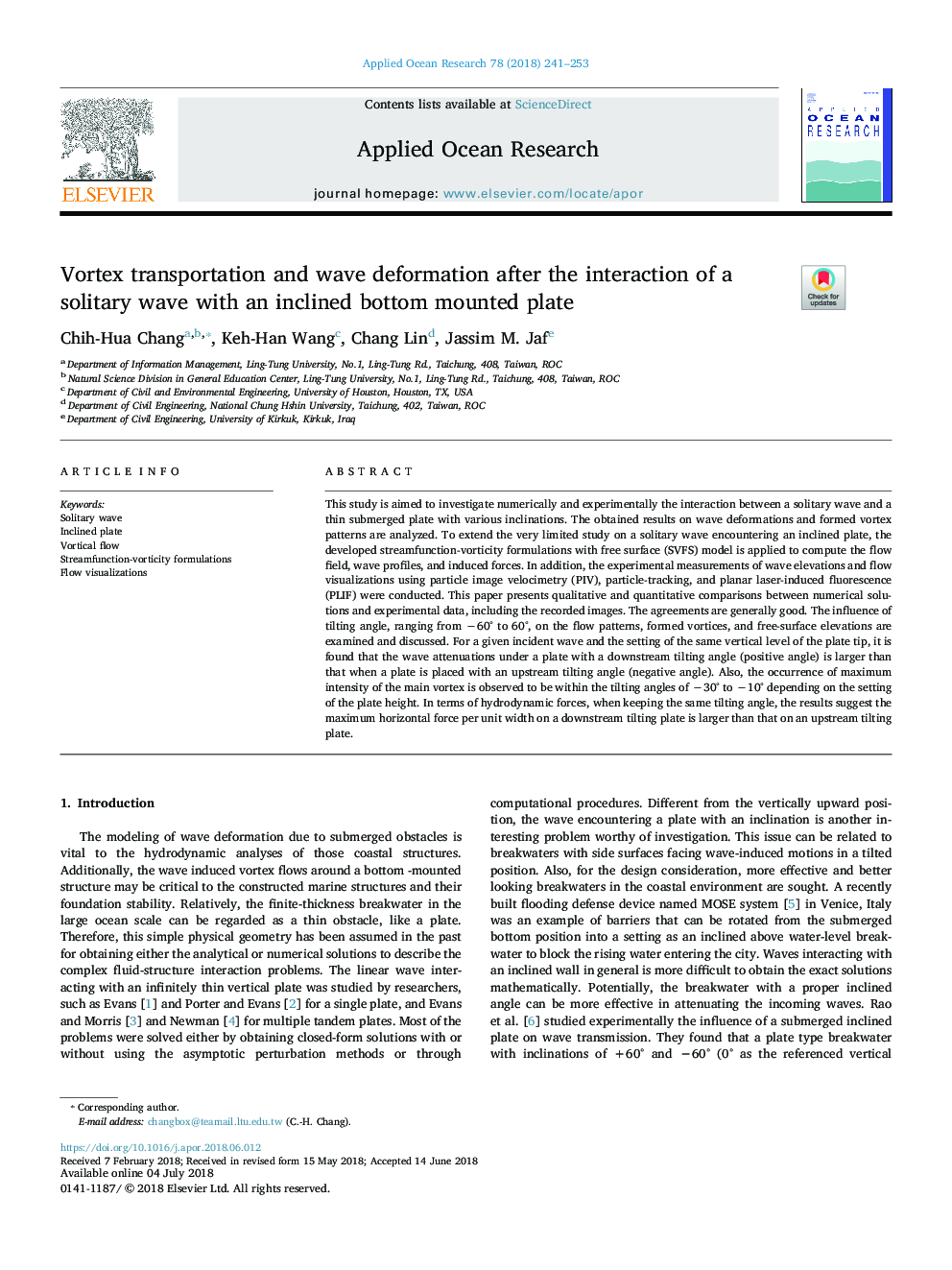| Article ID | Journal | Published Year | Pages | File Type |
|---|---|---|---|---|
| 8059218 | Applied Ocean Research | 2018 | 13 Pages |
Abstract
This study is aimed to investigate numerically and experimentally the interaction between a solitary wave and a thin submerged plate with various inclinations. The obtained results on wave deformations and formed vortex patterns are analyzed. To extend the very limited study on a solitary wave encountering an inclined plate, the developed streamfunction-vorticity formulations with free surface (SVFS) model is applied to compute the flow field, wave profiles, and induced forces. In addition, the experimental measurements of wave elevations and flow visualizations using particle image velocimetry (PIV), particle-tracking, and planar laser-induced fluorescence (PLIF) were conducted. This paper presents qualitative and quantitative comparisons between numerical solutions and experimental data, including the recorded images. The agreements are generally good. The influence of tilting angle, ranging from â60° to 60°, on the flow patterns, formed vortices, and free-surface elevations are examined and discussed. For a given incident wave and the setting of the same vertical level of the plate tip, it is found that the wave attenuations under a plate with a downstream tilting angle (positive angle) is larger than that when a plate is placed with an upstream tilting angle (negative angle). Also, the occurrence of maximum intensity of the main vortex is observed to be within the tilting angles of â30° to â10° depending on the setting of the plate height. In terms of hydrodynamic forces, when keeping the same tilting angle, the results suggest the maximum horizontal force per unit width on a downstream tilting plate is larger than that on an upstream tilting plate.
Related Topics
Physical Sciences and Engineering
Engineering
Ocean Engineering
Authors
Chih-Hua Chang, Keh-Han Wang, Chang Lin, Jassim M. Jaf,
